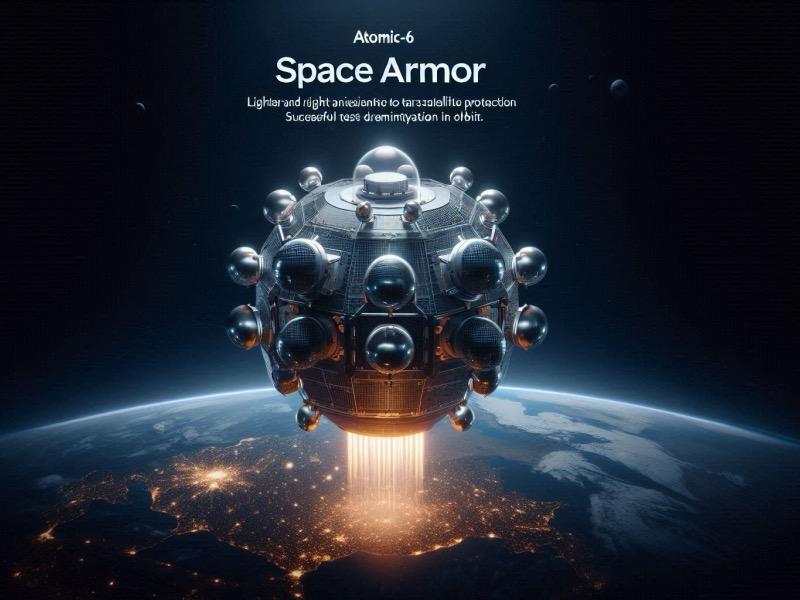Atomic-6, a materials manufacturer located in Marietta, Georgia, is on the verge of revolutionizing satellite protection. The company has created "Space Armor," a novel shielding solution that promises to be lighter and more robust than traditional methods. Following successful laboratory evaluations confirming its effectiveness against debris impact, Atomic-6 is now gearing up for an orbital demonstration and subsequent production for the U.S. Space Force and other entities.
The development of the Space Armor technology was fueled by funding from the U.S. Air Force and U.S. Space Force, amounting to a $1.2 million Small Business Innovation Research (SBIR) Phase 2 award and a $3.8 million Tactical Funding Increase (TACFI) agreement, which includes private matching funds.
According to Atomic-6 CEO Trevor Smith, the market is actively seeking advancements in debris shielding technology, which hasn't seen significant innovation since astronomer Fred Whipple introduced the "Whipple shield" in the 1940s. "Most shielding used today is effective but the government and many commercial firms are interested in alternatives," Smith told SpaceNews.
The goal of the SBIR contract is to advance protective shielding technology that protects satellites from debris impacts without interfering with radio-frequency communications. Smith said Space Armor is lighter and thinner than the Whipple shield, though the product has not yet completed flight tests. The company has developed two product variants: Space Armor Lite, designed to stop particles up to 3 mm in diameter, and Space Armor Max, engineered to withstand impacts from debris up to 12.5 mm in diameter. The Space Armor hexagonal tiles are about three-quarters of an inch thick. The tiles can be attached to spacecraft surfaces to protect critical components. According to Smith, the Space Armor Lite tiles are “about 30% lighter and 15% thinner than the Whipple aluminum shields.”
Hypervelocity impact testing at the University of Dayton Research Institute and Texas A&M University, involving 3 mm aluminum projectiles fired at speeds exceeding 7 kilometers per second, has shown that Space Armor tiles are fragmentation resistant – they absorb and contain debris impacts rather than creating secondary fragments. Smith said, “We do have a verbal offer to fly with a customer next year.”
The potential of a modular, lightweight system that minimizes fragmentation is highly attractive to both military and commercial space sectors. Atomic-6 is also exploring the use of curved Space Armor structures for astronaut suits and examining its application in ground combat vehicles. Smith stated, “This, in theory, should protect from lasers trying to blind a comms device.”
While declining to disclose pricing details, Smith mentioned interest from satellite insurers, stating that they indicated "once Space Armor is flight qualified, they would consider offering a discount to their customers if they’re flying the products, because they see it as such a risk mitigant.”
Atomic-6 also retains data rights to the Space Armor technology due to its development under an SBIR contract. The company is also working on Light Wing, a solar array under a separate $2 million TACFI agreement. Smith said, “Our solar array is going through flight qualification as well,” and added that an early version is scheduled to fly in February 2026.
Atomic-6 is planning a production facility for both Space Armor and Light Wing, aiming to commence manufacturing after product qualification.


